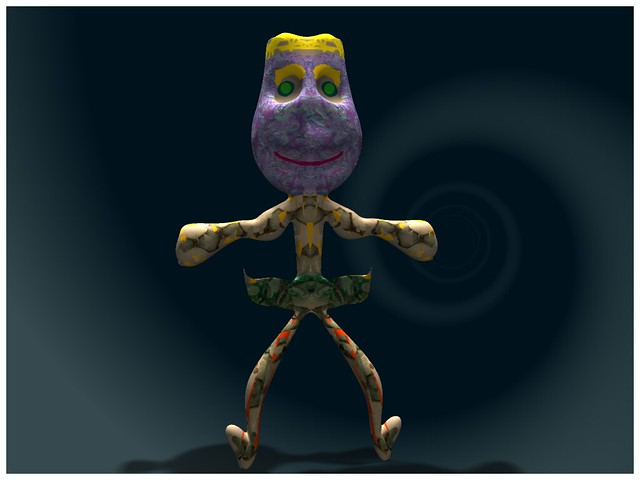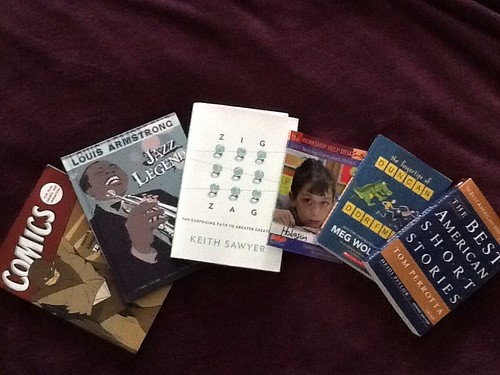And our collection of teasers for this summer’s Making Learning Connected MOOC continues …
<
The digital poster can be accessed directly: http://mrhodgson.edu.glogster.com/making-learning-connected
You can now sign up at the Making Learning Connected website: http://blog.nwp.org/clmooc/ The activities launch on June 15, and we want to invite you to join everyone in a summer of learning, making and fun.
Peace (in sparking your interest),
Kevin
Monthly Archives: June 2013
Teach the Web Constructive Criticism: Web Literacy Skills Proposal
This week, at the Teach the Web MOOC, we are being asked to consider the ways that we can offer constructive feedback and criticism to the ideas of others, in a way that is truthful but also positive. Given how much we discern meaning from face-to-face contact with others, technology at once makes criticism easier and more difficult. One of the suggestions is that we take a look at the developing Web Literacy Skills document that a team associated with Mozilla is working on, and offer up some feedback on how it looks, how it might work, and what strengths and weaknesses we notice about it.
I decided to use Thinglink to layer in some comments on top of the competency grid (a visual representation of the ideas being generated), in hopes of using technology to offer feedback in a meaningful way.
And here it is, embedded. Just hover over the image and find points where I have added notes.
Peace (in the feedback),
Kevin
Book Review: Field Guide to Writing Flash Non-Fiction

I’ve long been intrigued by flash fiction — shorter pieces of writing that utilize inference and character to drive home an idea or a story in a short amount of time and brevity of words. Mostly, though, I have thought about it terms of fiction. The Rose Metal Press Field Guide to Writing Flash Non-Fiction, edited by Dinty W. Moore, is a perfect introduction to the approaches that a writer might take when considering flash non-fiction — writing about the real but in a creative vein.
The book is a series of chapters in which published authors talk about the craft of flash non-fiction, and its place in the field of writing and reading. Topics range from image and detail, to finding your voice, to the use of language, to the concept of discovering a structure for your narrative. Each chapter has a short introduction, followed by not only a demonstrative piece of flash non-fiction but also some ways that the reader might “try out” some strategies.
It’s this part that intrigues me as a teacher, and a writer, and I appreciated those three components — overview, sample, suggestions — coming together in this collection. This field guide opened my eyes to some interesting possibilities for writing non-fiction in shorter bursts, but still making those pieces meaningful, insightful and worth reading. And I would be not be truthful if I am not making connections in my mind from this collection to the Common Core’s push towards more non-fiction reading and writing, in the content areas. In some ways, flash fiction is a natural fit for teaching about non-fiction writing. Students would not get overwhelmed by the length of the assignments, and yet, they would be learning about how to notice the world, use critical thinking and convey important messages about their topics.
I have explored this idea of shortened forms of writing before and continue to be intrigued by the possibilities.
Peace (in the small but powerful writing moments),
Kevin
Inforgraphic: History of Computer Programming Language
Thinking Through Instagrok for Classroom Research
I’ve written before about using Instagrok with my students as a way to hone and focus their research skills. I recently write a piece for Instagrok folks to share with teachers, to share a bit of how I have approached using their site. I also included a few ThingLink images as a way to document what Instagrok is and I will be sharing these resources out with some teachers I am working with through some consulting work with the Western Massachusetts Writing Project.
This one
and this one
and here is the link to the whole piece I wrote.
Peace (in the grokking),
Kevin
PS — as a note of disclosure, in return for writing the piece, Instagrok provided me with code for some teacher accounts, which I will be giving out to the teachers I am working with.
Here in the MOOC: The Music Video
Here is another teaser that I created for our Making Learning Connected MOOC, set to launch on June 15. You can sign up at http://blog.nwp.org/clmooc/ and join the summer fun. I wrote the song, using the Garageband app and my own words. The Mookle image comes from my friend, Chad.
Peace (in the MOOC),
Kevin
App Review: 123D Creature

I am pretty sure I found this app from Richard Byrne. I realize that many of the cool apps that I try out on the iPad often come suggested from Richard (Thanks, man!). Along with his amazing Free Tech for Teachers blog site, Richard also runs the periodic app review at his iPad Apps for School site. Both are worth following.
Anyway, this app — 123D Creatures — is a nifty three-dimensional creation tool that allows you to design and “cook” creatures, and it’s free. What I liked about it is the simplicity of instructions (the app walks you through the entire process) and the range of ways you can invent something new, something crazy, something interesting. You are in charge of body shape, texture, colors and even poses as you go through the process. The “cooking” part if when you are done, and the app renders your creature as an image that you can then export. (It occurred to me, too, that if you used the new ThingLink app with this image, you could perhaps create an interesting “story” or “informational text” layered on top of it. That’s for another day, perhaps.)
Here’s what I created one afternoon:

Cute, eh?
The process reminded me a lot of our claymation work — in which kids are using their hands and minds to create something out of a giant blob of nothing. Here, with the 123D Creature app, that nothing is virtual, and yet, you could easily make connections to the way engineers design things using CAD (computer aided design) software programs. A lot of the same steps that would go into an engineer design also goes into creating a creature here.
Peace (in the mold),
Kevin
PS — I see in the reviews of the app that some folks had trouble with the rendering. I did not. But it’s good to read reviews just to get a sense of potential troubles.
What’s Your Summer Reading Pile Look Like?
(My short list of books)
It’s not too late, but it will soon be, to send a photo of your “to be read” photo of the books you hope to read this summer. The Nerdy Book Club – one of the best clubs on the face of the planet — is pulling together a visual project of photos of books on people’s “to read” list. The deadline is tonight (June 1), so get cracking!
More information is at the Nerdy Book Club site. (You read? You’re a member.)
Peace (in the books),
Kevin
Making Connected Learning: What Are You Doing This Summer?
Here’s another teaser that I created for our Making Learning Connected MOOC, set to launch June 15. But you can sign up over at the website: http://blog.nwp.org/clmooc/
Peace (in the MOOC),
Kevin




